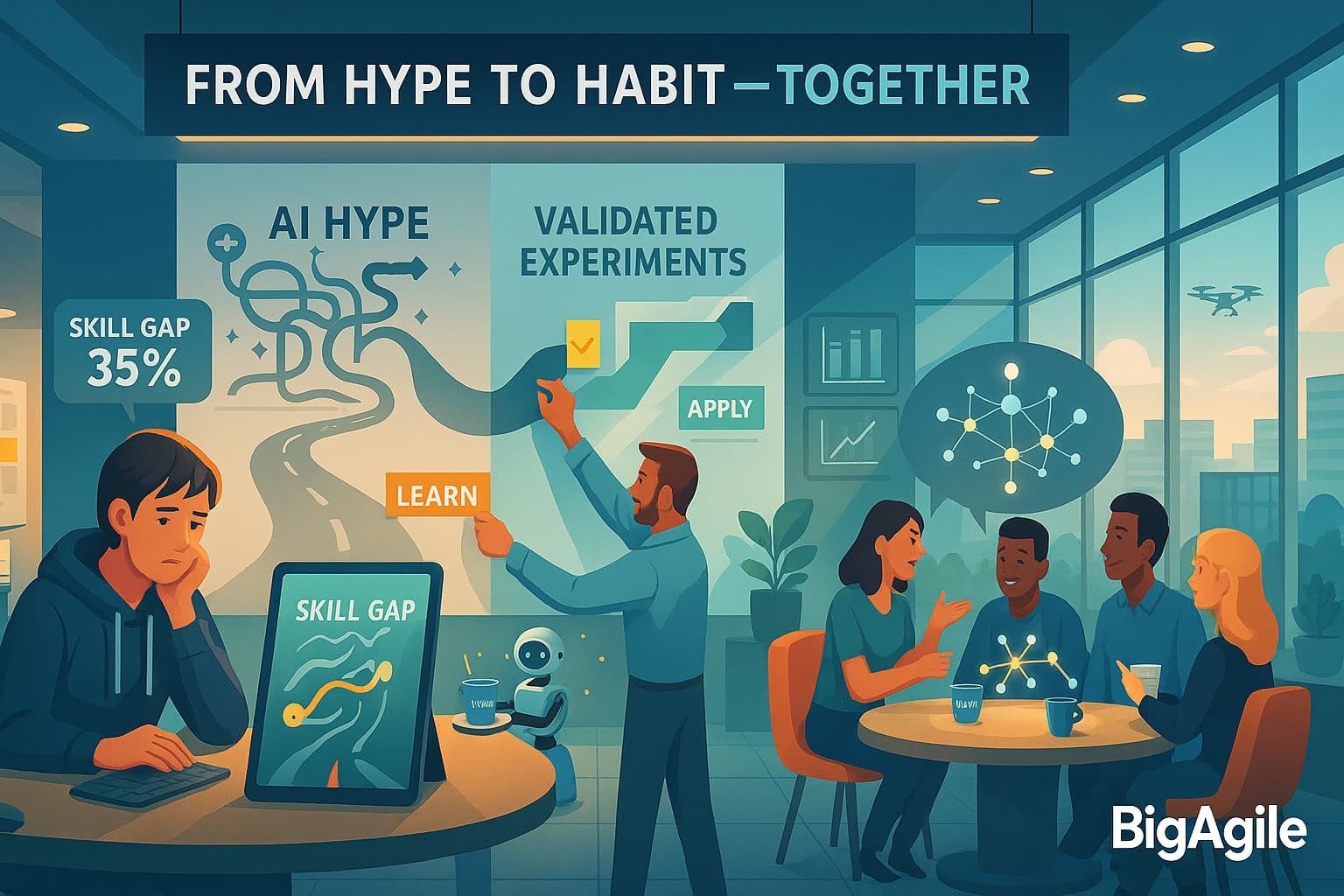
Did You Know?
Miro surveyed 8,094 knowledge workers across seven countries to see how AI is landing on their digital desks.
Key findings:
- 35% of respondents admit their AI skills are “non-existent,” and 54% say they lack the time or resources to learn them.
- Workers are 75% more likely to underestimate their own skills compared to their teammates — a classic case of AI-imposter syndrome.
- Despite this, optimism remains high: 61% feel excited and believe AI can boost wellbeing, while 44% already credit AI with higher productivity.
- 42% plan to use new AI skills to land their next role; Millennials are leading, while Gen Z remains the most skeptical.
- Workers’ top requests to leadership include: formal training (45%), a clear adoption strategy (37%), and business-value storytelling (35%).
So What?
The sentiment among knowledge workers reveals a widening gap in AI readiness within many organizations. When one in three professionals still doesn’t use AI, and half are unsure when to do so, the pace of transformation slows down. This echoes MIT Professor Thomas Malone’s “superminds” research: collective intelligence only soars when humans and machines complement each other.
From a workflow perspective, the data reflects batch-size dilemma: we’ve introduced powerful tools but keep learning in large, irregular batches, trapping progress in long queues.
Culturally, enthusiasm alone won’t overcome inertia (organizational gravity) without a guiding coalition, a clear vision, and ongoing wins (per Kotter-Leading Change).
Bottom line: companies that treat AI like just another software rollout risk losing talent, fully trained by their competitors.
Now What?
- Reduce learning batch size: embed micro-upskilling (15-minute AI drills, pair-prompting sessions) into sprint cycles to turn curiosity into competence.
- Map an change pathway: build awareness (“why AI, why now”), desire (personal career benefits), knowledge (role-specific guides), ability (sandbox challenges), and reinforcement (badges, real-time kudos). Use ADKAR, Kotter, etc...
- Mine data exhaust: treat prompt logs, usage stats, and outcome metrics as a continuous-improvement dataset. Use data mining to identify bottlenecks, biases, and breakthrough patterns in near real-time.
- Design for collective intelligence: create cross-functional “AI guilds” that combine high social perceptiveness with shared voice to boost group IQ.
- Institutionalize small-batch experimentation: limit WIP on AI pilots, celebrate quick feedback, and scale only validated wins to avoid “more talk than action” fatigue (sound familiar?).
Catalyst Leadership Questions
| Leadership Question | Probing Prompt |
|---|---|
| Where does AI create real customer value in our current flow? | Ask: “Which customer pain point could an AI-enabled micro-service relieve this quarter?” |
| How will we close the 35 % “non-existent skills” gap? | Ask: “What formal training sprint can we ship in the next 30 days?” |
| What early-warning metrics reveal AI adoption stagnation? | Ask: “Which dashboard signal would trigger a coaching swarm within 24 hours?” |
| How do we ensure Gen Z feels safe experimenting? | Ask: “What psychological-safety rituals can we pilot in our next hack-day?” |
| When will we declare and celebrate our first AI short-term win? | Ask: “Which outcome (not output) will prove momentum and merit a company-wide spotlight?” |
AI isn’t just coming for knowledge workers, it’s coming with them. The survey shows employees eager to move forward, but many companies still have the keys in the ignition. Lead with small-batch learning, data-driven guardrails, and supermind-level collaboration, and you’ll turn hype into habit.
Remember: if you don’t train your people, your competitors will. In corporate Darwinism, skill migration happens faster than your quarterly roadmap, just ask the millennial updating their LinkedIn headline right now. I see it all the time.